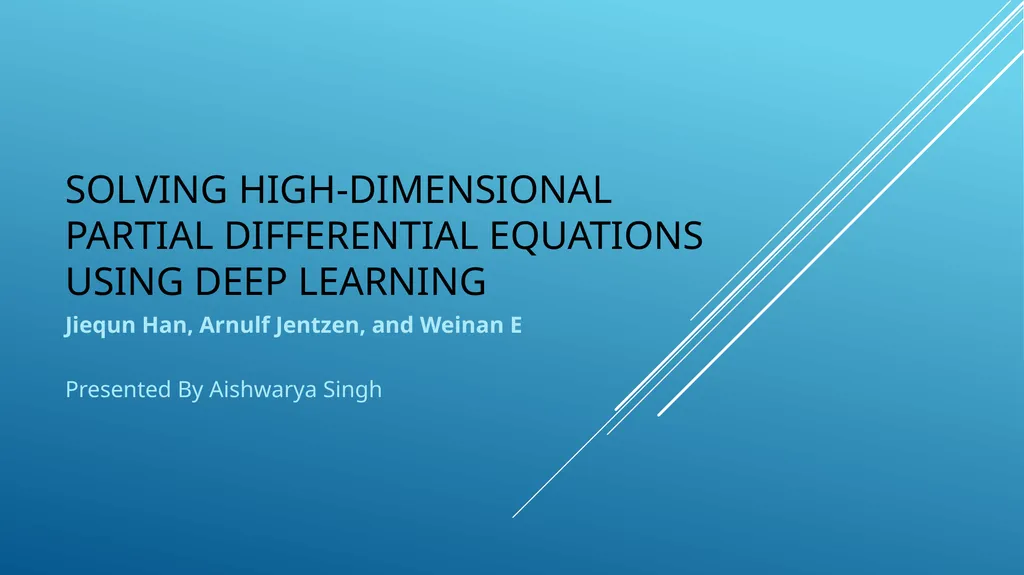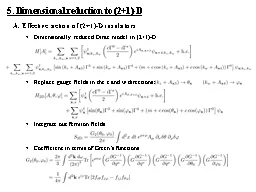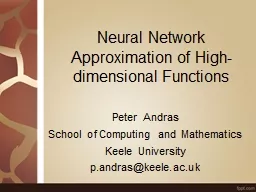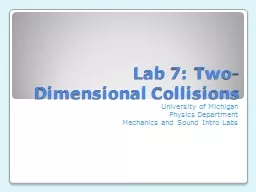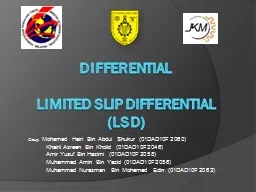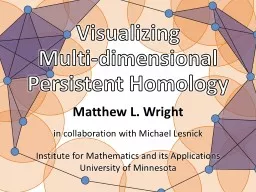Solving High-Dimensional Partial Differential
Author : briana-ranney | Published Date : 2025-06-23
Description: Solving HighDimensional Partial Differential Equations Using Deep Learning Jiequn Han Arnulf Jentzen and Weinan E Presented By Aishwarya Singh introduction Partial Differential Equations are a ubiquitous tool to model dynamic
Presentation Embed Code
Download Presentation
Download
Presentation The PPT/PDF document
"Solving High-Dimensional Partial Differential" is the property of its rightful owner.
Permission is granted to download and print the materials on this website for personal, non-commercial use only,
and to display it on your personal computer provided you do not modify the materials and that you retain all
copyright notices contained in the materials. By downloading content from our website, you accept the terms of
this agreement.
Transcript:Solving High-Dimensional Partial Differential:
Solving High-Dimensional Partial Differential Equations Using Deep Learning Jiequn Han, Arnulf Jentzen, and Weinan E Presented By Aishwarya Singh introduction: Partial Differential Equations are a ubiquitous tool to model dynamic multivariate systems in science, engineering and finance. PDEs are inherently multidimensional by the definition of partial differentiation. “Solving” a PDE refers to the extraction of an unknown closed-form function of multiple variables (or an approximation thereof) from a known relation between the dynamics of some of these variables (the PDE), and some boundary conditions. Stochastic PDEs are thought of as a generalization of regular (deterministic) PDEs. partial differential equations in finance: The Black-Scholes Equation is likely the most famous PDE in finance. The Hamilton-Jacobi-Bellman Equation (HJB) is also a prominent PDE for dynamic asset allocation in an actively trading portfolio. Han et. al. have taken on the challenge of solving extremely high dimensional versions of these PDEs using a Neural Network approximation method. Motivation – The Curse of Dimensionality: The “Curse of Dimensionality” (as coined by Richard Bellman in 1957) is an issue seen when increasing the numbers of objects being modeled in any system. A quantum physical system with many particles. A biological system with many genes. A financial system with many assets. This issue is most often referred to in data mining and combinatorics contexts. In the context of PDE-based modeling, the “curse” refers to the explosion in computational costs for numerical algorithms, which often need to be used when analytical solutions are unavailable. Neural Networks Introduction: Neural Networks are a family of algorithms that can be used to create powerful models for regressions or classification problems on high-dimensional data. Neural Networks are compositions of simple functions that ultimately approximate a much more complex function. Neural Networks are very heavily parametrized with huge numbers of ‘weights’ that are optimized for simultaneously. Neural Networks Basics: A ‘perceptron’ (aka. ‘artificial neuron’) is the building block of a Neural Network. A perceptron feeds the dot product of a vector of inputs and a vector of ‘weights’ into an Activation Function. An Activation Function mimics the ‘firing’ of a biological neuron. The output is negligible until the input reaches a certain threshold, thus producing a nonlinear micro-model. Popular activation functions are the step function, smoothed step (sigmoid) function, linear rectifier, and smoothed rectifier (‘softplus’ function). Each ‘layer’ of a Neural Network consists of several parallel perceptrons typically processing the same inputs, but
